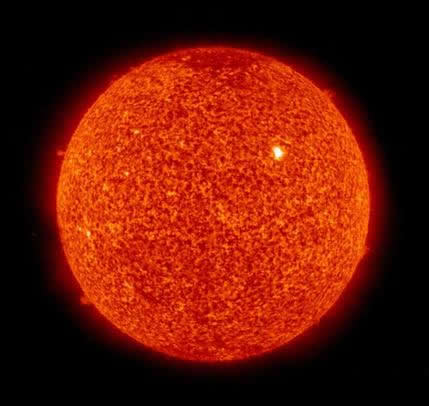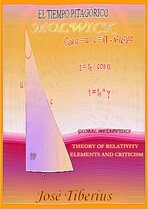2.d) Relativistic physics and mathematics
We believe a close notion of Albert Einstein’s Theory of Relativity is a collection of mathematical curiosities that represent half the physical reality. The other half is Quantum Mechanics, with its own collection of mathematical, statistical, and philosophical curiosities. The worst –or best– part is that they are incompatible with each other.
Admittedly, it cannot be simple to invalidate relativistic physics. If it were, we would have known a long time ago, apart from changing the definition of a second, of course!
Frequently, critical comments in the list of Errors and mathematical curiosities of relativistic physics refer to, on the one hand, the concepts and not the tiresome Baroque-style formulae, and on the other, interpretations of the facts, not the facts themselves. Regardless, even the facts seem slightly relative when we are talking about Einstein’s theories because, on some occasions, they are nothing more than thought examples.
The lack of formulae or complex derivations does not mean that these mathematical curiosities of relativistic physics do not have a great deal of mathematical content. On the contrary, when one understands the subjacent concepts to the formulae, one truly understands the topics at hand, and we would dare to say the math itself too.
The first mathematical curiosity of Theory of Special Relativity that interests us is this possible relation:
Where γ = relativity / normality
The Errors and mathematical curiosities of relativistic mechanics are interspersed in the rest of the pages of the book; in this section, there is a table with links to the most striking.
Apparently, there is almost unanimity when it comes to the goodness of relativistic physics, which means that it is practically a dogma of mathematical faith. It would be good to try to abandon the prejudices, considered as preconceptions, when reading this section; and it would be even better to presume that the criticisms are correct, to compensate the above effect, and to understand mathematical curiosities of relativistic physics with a constructive sense.
The idea is to reset the history of relativistic physics from the beginning, taking advantage of current culture and trying not to incorporate or presume any conclusion on the premises. To do this, one has to take extra care with terminology and the implicit concepts it might contain.
We do get the impression that the background weaknesses in Special Relativity preclude the use of a clear and precise terminology.
Before going into arguments, we would like to point out that the most challenging part will be to separate the real and correct from the incorrect in relativistic mechanics, even if the latter is correct in an imaginary sense. Also, it is hard to understand why individual mistakes or imaginary successes happened and still do.
One may find in the table below some of the most regular errors contained in the uncountable physics experiments that supposedly confirm Special Relativity, some cute mathematical curiosities, and some bad habits in the application of the scientific method. Nevertheless, many of these points can include several aspects, and not all of them are here.
Solar and Heliospheric Observatory
(SOHO) NASA (Public domain image)

The efficiency of the calculus is a fact, despite the errors in conceptual interpretation.
As an example, Einstein’s General Relativity explains in 1916 the precession of the precession of the perihelion of Mercury with fantastic precision, although in 1898 Paul Gerber had explained the precession 20 years before with the same amazing precision. Now, the Global Physics does the same using a theoretical model incompatible with relativistic mechanics.
Logically, when the physical nature of an event is unknown, one can always take an easy way out and apply a purely mathematical solution, if one manages to adjust it numerically.
Indeed, the basis for the scientific method collapsed after giving in to the supposed efficiency of relativistic physics, even if it made no sense whatsoever. Well, we suppose it is not the first time that has happened.
Then it is inevitable; if mathematics invades physics, Relativity and its singularities appear. When statistics invades it, Quantum Mechanics arises, and principles of indeterminacy start popping up everywhere. Finally, if cheap philosophy invades it, Darwinian evolution emerges. Mutational dimensions everywhere!
- Mathematical curiosities of relativistic mechanics
- Conceptual errors of Relativity
- Bad habits in the application of the scientific method
- Excessive resorting of science to magic
* * *
